Conventional power plants still generate 97 per cent of power in Tunisia. However, there are plans to generate 30 per cent of Tunisia's power from renewable sources by 2030. The country's first solar power plant in Tozeur, at the edge of the Sahara, is making an important contribution to this energy transition.
Video: Tunisia's first solar power plant (KfW Development bank/Christian Chua and Thomas Schuch).
Heat is normal, rain is scarce: the desert is a hostile environment, but also an energy-friendly one. The meteorological prerequisites for producing solar energy could not be better. So it comes as no surprise that Tunisia's first solar power plant would be located in the desert – of Tozeur. The city, which grew out of an oasis, is in the southern part of the country on the northern edge of the Sahara.
A low white wall surrounds the power plant outside the city gates. Rows of solar modules pointed southward cover 40 hectares of government land. The plant has been producing energy since 2019, so far at an output of ten megawatts. It is designed to produce 20 megawatts starting in the middle of 2020, and plans are in place to expand the plant to add battery storage. These measures will be able to cover a third of the energy demand for the city and its nearly 50,000 inhabitants.
“The solar power plant in Tozeur is a major step towards sustainability”, says Nejib Sayari about Tunisia's dramatic introduction to solar power production. Sayari is responsible for new building projects in the electricity division of STEG (Société Tunisienne de l’Electricité et du Gaz). The state-run power and gas distribution utility built and operates the plant in Tozeur. KfW supported STEG by financing the project with a total of 23.5 million euros on behalf of the German Federal Ministry for the Environment, Nature Conservation and Nuclear Safety (BMU), the German Federal Ministry for Economic Cooperation and Development, (BMZ), and the EU.
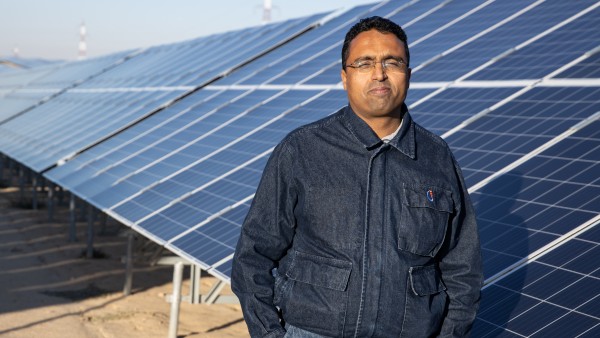
louja Abderrazek is the electrical engineer responsible for the project near the city of Tozeur.
Forerunner for the whole country
17,000 tonnes of CO₂ saved annually due to green power production. Renewables are considered key technologies with regard to reducing greenhouse gases around the globe. Prime Minster Youssef Chahed demonstrated the importance of the milestone in the eyes of the Tunisian government by inaugurating the power plant himself in 2019.
After this successful leap into the era of solar power, another 50-megawatt solar power plant is being built nearby by the private sector. Tunisia has a good deal of catching up to do when it comes to the field of renewable energy sources. Conventional power plants still produce 97 per cent of its power. Natural gas is the predominant source of fuel for the plants. To a great extent, the fuel is imported from Algeria and must be paid in US dollars. The expensive imports in combination with government-regulated low electricity prices are the source of the substantial losses STEG has been posting for years. Another reason the Tunisian government is accelerating expansion of renewables is because it wants to and needs to cut back on expensive subsidies from the national budget for power supply. Furthermore, the country's power supply is insufficient. The clearest examples of this were the blackouts in 2012 and 2014.
The conversion of Tunisia's power supply is quite ambitious. STEG Manager Sayari mentions some key data, including plans to generate 30 per cent of Tunisia's power by 2030 using renewable energy sources, primarily solar and wind power. Only 400 megawatts are currently produced with renewables: 250 megawatts from wind, 70 megawatts from photovoltaic roof panels, 20 megawatts from Tozeur and 60 megawatts from small hydropower plants. Additional power plant output of 250 megawatts per year will be needed to cover increasing power consumption, which grows by nearly three per cent annually.
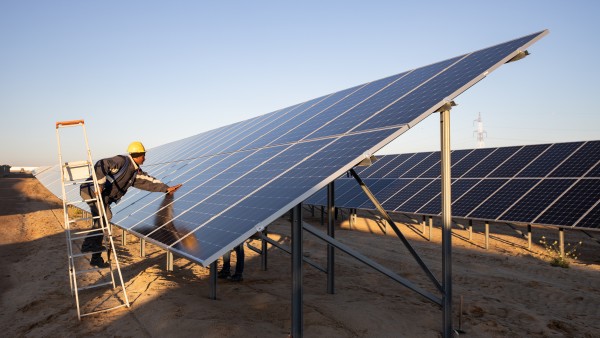
if sand on the module surface begins to disrupt power production, the module can be cleaned using machines that do not consume any water.
Efficiently using the sun’s power
More and more power is needed in Tozeur as well. Temperatures here can exceed 50 degrees Celsius during the summer. In this heat, both the local population and tourists in the hotels demand air conditioning to cool off. Tozeur, located near the salt lake Chott el Djerid, is a centre of Tunisian desert tourism. The oasis is also the second-most important area in the country for cultivating dates, and Tunisia is one of the world's largest exporters of this fruit, which is frozen before export.
The sun shines unceasingly in Tozeur, between seven and fourteen hours each day. But what about the wind that sometimes swirls the desert sands and blows across the plant? Does this impair the photovoltaic process? The STEG experts are easily ready for that question. The output of a panel is constantly monitored in real time. So it immediately becomes apparent if sand on the module surface begins to disrupt power production, and the module can be cleaned using machines that do not consume any water.
Video: KfW is supporting Tunisia in various projects on behalf of the German Federal Government (KfW Group/Christian Chua and Thomas Schuch).
“The South is the pearl of Tunisia.”, says STEG Manager Sayari. It makes sense that a power supplier would say that because the South promises “desert power”. This phrase really exists. “Desert power” was an idea created by the initiators of Desertec, a foundation that wants to go so far as to supply Europe with energy using clean power from solar farms in the Sahara. There are also plans to make Tunisia a Desertec site. The gigantic version of the Desertec idea failed. But since Tozeur began operation, now even the smallest state in the Maghreb region has desert power.
The goal of 30 per cent by 2030 is just the beginning of a path to a sufficient, reliable, sustainable power supply for the country. Sayari also mentions the ELMED project, a 200-kilometre-long high voltage cable on the seabed between Tunisia and Italy that is expected to facilitate power import and export between North Africa and Europe.
Published on KfW Stories: 19 March 2020.
The described project contributes to the following United Nationsʼ Sustainable Development Goals
Goal 7: Ensure access to affordable, reliable, sustainable and modern energy
Close to 80 per cent of the energy produced worldwide still comes from fossil fuel sources. Burning fossil fuels also generates costs for the health system due to air pollution and costs for climate-related damages that harm the general public, not just those burning the fuel.

All United Nations member states adopted the 2030 Agenda in 2015. At its heart is a list of 17 goals for sustainable development, known as the Sustainable Development Goals (SDGs). Our world should become a place where people are able to live in peace with each other in ways that are ecologically compatible, socially just, and economically effective.

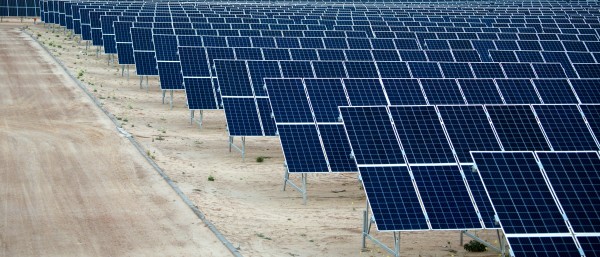
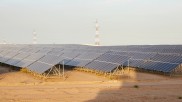
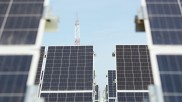
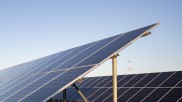
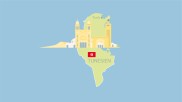
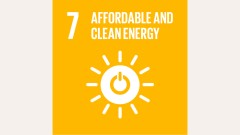
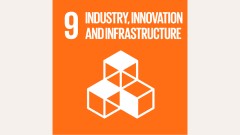
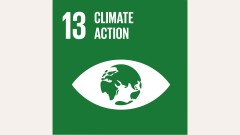
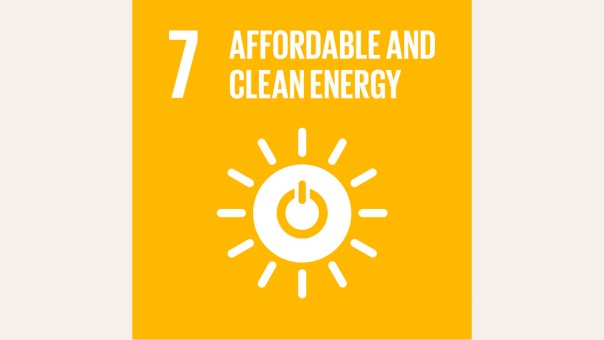
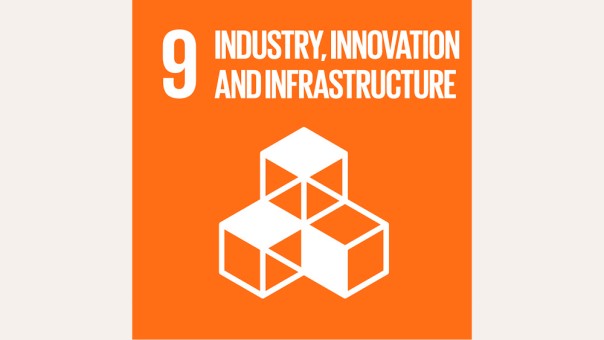
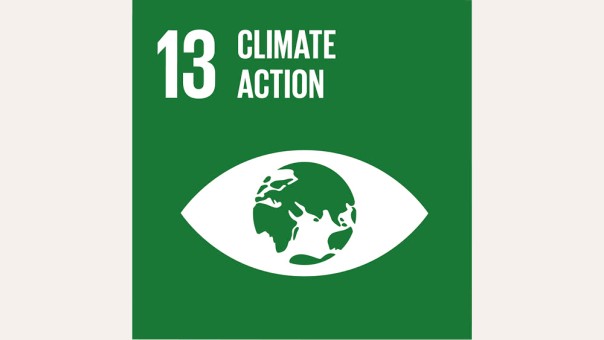
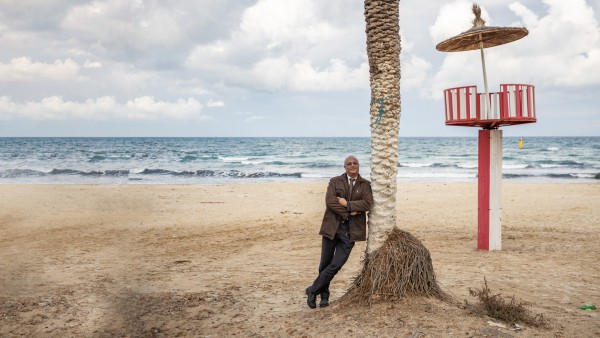
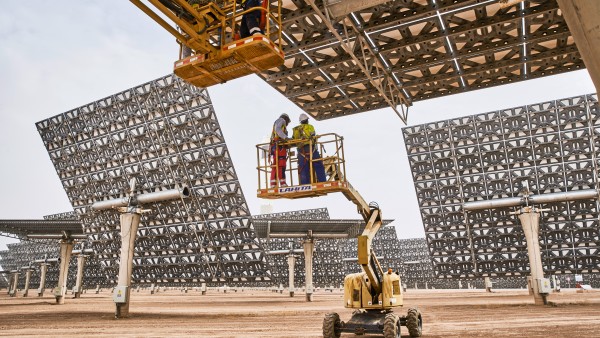
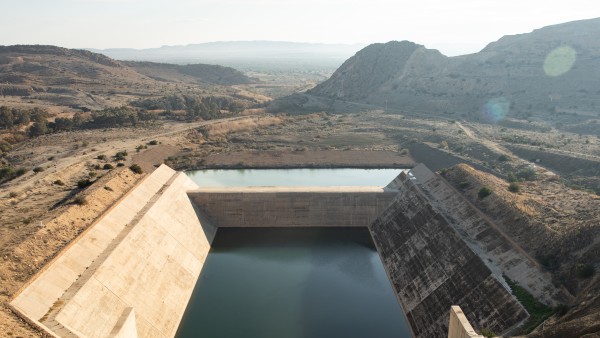
Data protection principles
If you click on one of the following icons, your data will be sent to the corresponding social network.
Privacy information